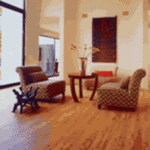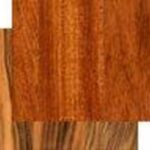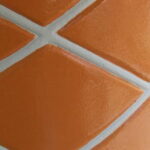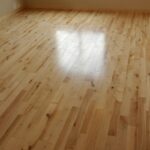Have you ever considered what your living room or den or even your whole house would look like with new veneer wood flooring? Have you even gone so far as to go to your local flooring specialist or even Lowes or Home Depot and had an estimate drawn up? After you picked your chin up off the floor did you decide that the old carpet in your home was just fine for now? Having a veneer wood floor installed in your home is quite expensive and few people can justify that expense to themselves. Let me show you just how inexpensive and easy it can be to buy the materiel and install a veneer wood “floating” floor yourself!
The first stage of this process is planning. If this project is not planned out right it can be more costly in time and trips back to the store than it has to be.We need to know first of how much floor space we are going to cover. This is a very easy process and is achieved by simply measuring the length and the width of the floor and multiplying one by the other. For example if we had a floor that measured 10 X 20 we would need 200 square feet of flooring to cover it. Also, after you have your square footage for the room(s) approximately 5% needs to be added to the total for cutting waste. So going by our example we would need 200 square feet of flooring plus 5% of that which is an additional 10 square feet for waste. Waste is not something we like to consider but it is a necessary evil which is figured in all estimates. Next we need to plan for what we will be putting beneath the veneer flooring. All floating floors require a plastic padding which is sold usually in rolls with markings as to which side is up etc. In purchasing this padding you may come up with several feet you will not use, again this is the nature of the beast. Last in the planning stage is a moisture barrier. Quite a few of the newer types of padding advertise they have a moisture barrier built in but call me old fashioned I just don’t trust that claim and nothing ruins a veneer floor more rapidly than moisture! For the investment you are about to make, a good heavy mil thickness of bisquene plastic will give you peace of mind. This goes between the padding and the floor you are covering You will also need the linear circumference of your walls in order to buy some half inch quarter round molding to finish the job.
Now that we have planned for our materiel’s it is time to consider what tools are needed for this project. First and foremost you will need a good table saw with a sharp veneer cutting blade. Most do-it-yourselfers will already have the tablesaw and the blade is not very expensive. If you plan to run the flooring into adjoining rooms then you will need an undercut saw that will be used to cut under a portion of the door facings. These are also inexpensive. The final “special”tool you will need is a puller. This is used in tight spaces to pull the veneer boards into place. This tool can be found in the flooring section of Home Depot or Lowes and is also inexpensive. Other tools are the usual measuring and cutting devices such as knives, scissors and tape measure and some quarter inch spacers to keep a uniform space at the wall.
Buying the flooring you like is going to be the personal part of the whole process. Veneer flooring comes in all widths and lengths and can vary in price from $1.25 per square foot to over $5.00 per foot. The choice comes down to taste and budget. The color, design and price are the only things left in the planning stage.
Now that you have bought your flooring and padding and moisture barrier plus acquired the necessary tools to do the job, it is time to start your new floor. After installing the moisture barrier first and then the padding it is time to install your floor. The initial cut and measurements are very important in this process to insure less waste and prevent trouble at the end of the project. Number one consideration at the beginning is which direction the floor should run. The general professional consensus on this is that the floor should run with the light that is in the room. In other words, if you have window(s) on one wall or opposite walls then the floor should run parallel with that source of light. After that decision is made it is time for your first cut. To make this cut you need to take the width of your project and divide the width of a single board into that measurement. This will allow you to know how many boards wide your project will be and how wide the last board will be. If the last board is less than 3 inches then it will be necessary to rip your first row of boards to compensate for this as a final row of boards that are too narrow is not only harder to snap into place but is also easier to break and of course breaking a board causes waste. Next, your initial board should be about one third in length. This will cause all of the seams to be staggered and thus make the floor not only look better but much more durable and strong. After cutting the first board, take the next full length board and snap the two together as per manufacturers instructions. This process will get easier as you go through your project because of repetition. Place these two boards on the floor and butt them against the wall using a couple of the quarter inch spacers to keep them uniform and off the wall. This quarter inch allows for expansion in varying temperatures and keeps “creaking” to a minimum when walking on the floor. After this the job is just basically snapping boards into place and making cuts at the end and beginning of each row. The second row should start with a two thirds length board and the third row should be started with a full board and then this process should be repeated throughout the entire width of the room.
When you come to a doorway that you plan to run the flooring through, it will be necessary to undercut each door facing. You will need to take a small piece of board(one of your waste cuts will do) and place it in front of the door facing to be undercut. then take the undercut saw and saw the door facing to the point where the board you want to lay will run under that facing. When placing the board under the facing it will need to be already snapped into place with the next board as there will not be enough room to do this after the board is under the facing. If you have a fireplace in the room you are flooring you can also undercut the bricks but a much easier method is to treat the hearth as a wall and leave a quarter inch space then cover it like you will do on the walls with half inch quarter round molding. Instead of installing the molding with finish nails like you will on the walls, a good adhesive can be used and will secure it quite nicely. It is also a good idea to paint or stain the molding before you install it.
Although I’m sure you will adapt this method to your own situation and level of expertise, this should be all you need to know to install a floating veneer floor in your home. By doing this you can put this beautiful flooring in your home for a fraction of the cost of paying someone to do it. My floor that I installed myself was 600 square feet and the lowest estimate to have it installed was over $3900.00. Tools, materials and all, I spent less than $1500.00 to do it myself. I saved over $2000.00!




